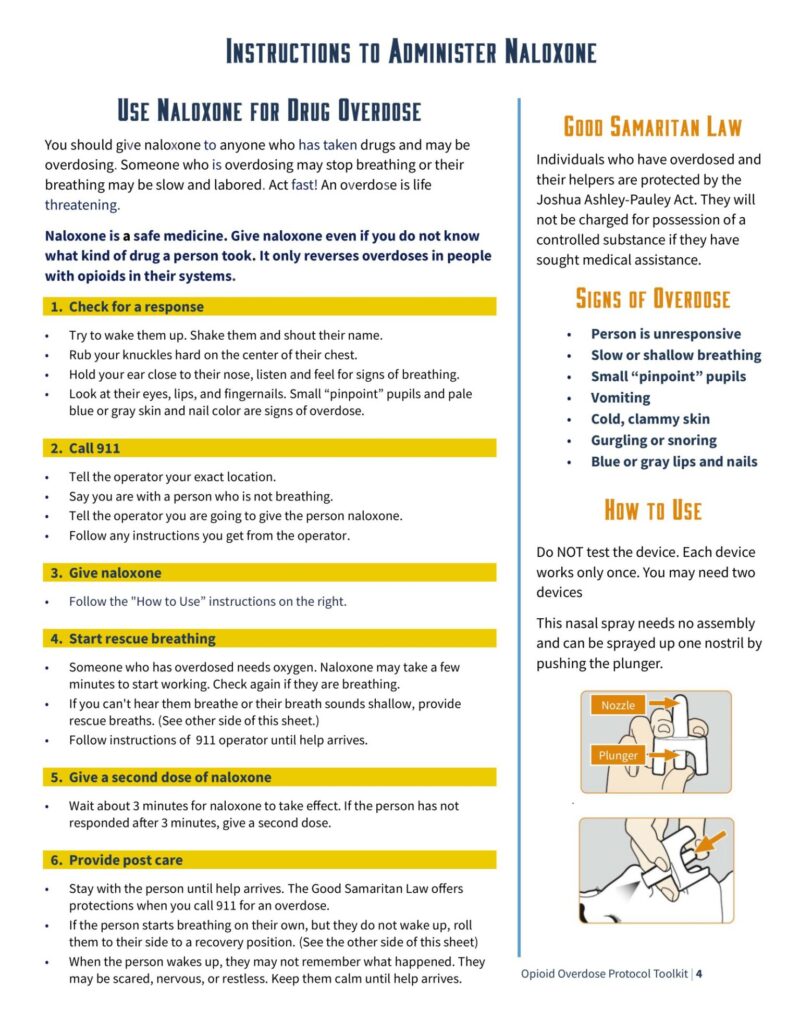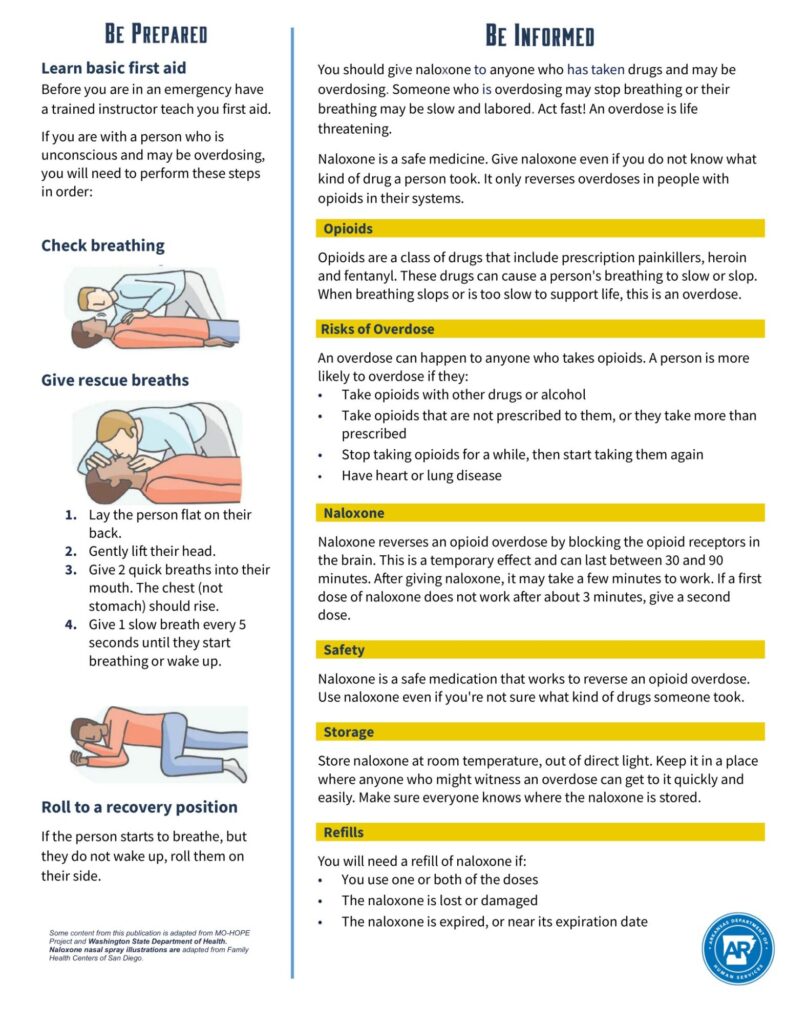
Arkansas Act 811 requires public high schools and state-supported universities to have opioid overdose reversal kits.
School districts are strongly encouraged to develop protocols for storage and use of the kits.
District leaders can use the following information to support protocol development and to educate staff, students, and family members.
When an overdose is suspected, helpers should call 911 so the individual can receive immediate medical attention. Naloxone, the generic name for the drug NARCAN®, works to reverse opioid overdose in the body for only 30 to 90 minutes. But many opioids remain in the body longer than that. It is possible for a person to still experience the effects of an overdose after a dose of naloxone wears off. Also, some opioids are stronger and might require multiple doses of naloxone.
They should be monitored for another two hours after the last dose of naloxone is given to make sure breathing does not slow or stop. People with physical dependence on opioids may have withdrawal symptoms within minutes after they are given naloxone.
Withdrawal symptoms might include:
While these symptoms are uncomfortable, they are usually not life threatening. The risk of death for someone overdosing on opioids is worse than the risk of experiencing withdrawal symptoms as a result of naloxone administration. Clinicians in emergency room settings are being trained to offer patients immediate relief and referral to treatment for opioid use disorder with effective medications after an opioid overdose is reversed.
A person who is overdosing – or a bystander trying to help a person who is overdosing – will not be charged with drug possession if they call for medical assistance. The act I named for a 20-year-old UCA student who died from a drug overdose because the people who were with him were afraid they would be prosecuted if they called for medical help.
This law protects people who administer naloxone from civil lawsuits, criminal charges, and professional sanctions.
Introduction (45 sec)
Training (2 min 15 sec)
Joshua Ashley Pauley (50 sec)
To track the efficacy of programs providing naloxone for community use and to provide data on statewide prevention efforts, when naloxone is administered the person who administered the dose is asked to complete the Naloxone Reporting Tool. This online survey is mobile compatible and comprised of a total of 24 questions, some required and some optional. Those in a position to administer naloxone are encouraged to review the questions before an emergency arises.
Through a partnership with multiple agencies and organizations, NARCANsas.com is a mobile compatible information hub for the prevention, treatment, and recovery of opioid use in Arkansas. Download the NARCANsas app to your phone to have instant access to the step-by step naloxone administration reference and reporting tool as well as many other resources.
Observe student for signs and symptoms of opioid overdose. Suspected or confirmed opioid overdose consists of:
| Opioid High | Opioid Overdose |
|---|---|
| Relaxed muscles | Pale, clammy skin |
| Speech slowed | Speech infrequent |
| Normal breathing | No breathing or shallow breathing |
| Appears sleepy, nodding off | Deep snorting or gurgling |
| Responds to stimuli | Unresponsive to stimuli (calling name, shaking or sternal rub) |
| Normal heartbeat/pulse | Slowed heartbeat/pulse |
| Normal skin color | Cyanotic skin coloration (blue or gray lips, fingertips) |
| Typical pupil size | Pinpoint pupils |
Immediately call for help.

